
Filter News
Area of Research
- Biology and Environment (18)
- Energy Frontier Research Centers (1)
- Energy Science (16)
- Fuel Cycle Science and Technology (1)
- Fusion and Fission (1)
- Isotopes (1)
- Materials (44)
- Materials for Computing (8)
- National Security (36)
- Neutron Science (13)
- Nuclear Science and Technology (4)
- Quantum information Science (1)
- Supercomputing (19)
News Topics
- (-) Hydropower (12)
- (-) Molten Salt (10)
- (-) Nanotechnology (64)
- (-) National Security (86)
- 3-D Printing/Advanced Manufacturing (146)
- Advanced Reactors (40)
- Artificial Intelligence (131)
- Big Data (79)
- Bioenergy (112)
- Biology (128)
- Biomedical (73)
- Biotechnology (39)
- Buildings (74)
- Chemical Sciences (86)
- Clean Water (33)
- Composites (35)
- Computer Science (226)
- Coronavirus (48)
- Critical Materials (29)
- Cybersecurity (35)
- Education (5)
- Element Discovery (1)
- Emergency (4)
- Energy Storage (114)
- Environment (218)
- Exascale Computing (67)
- Fossil Energy (8)
- Frontier (64)
- Fusion (66)
- Grid (74)
- High-Performance Computing (130)
- Irradiation (3)
- Isotopes (62)
- ITER (9)
- Machine Learning (68)
- Materials (157)
- Materials Science (158)
- Mathematics (12)
- Mercury (12)
- Microelectronics (4)
- Microscopy (56)
- Neutron Science (171)
- Nuclear Energy (122)
- Partnerships (68)
- Physics (69)
- Polymers (35)
- Quantum Computing (53)
- Quantum Science (93)
- Security (31)
- Simulation (65)
- Software (1)
- Space Exploration (26)
- Statistics (4)
- Summit (71)
- Transportation (103)
Media Contacts
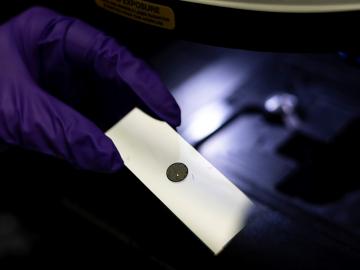
Nuclear nonproliferation scientists at ORNL have published the Compendium of Uranium Raman and Infrared Experimental Spectra, a public database and analysis of structure-spectral relationships for uranium minerals. This first-of-its-kind dataset and corresponding analysis fill a key gap in the existing body of knowledge for mineralogists and actinide scientists.
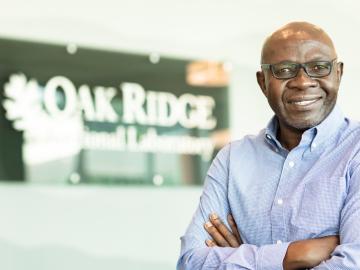
ORNL’s Assaf Anyamba has spent his career using satellite images to determine where extreme weather may lead to vector-borne disease outbreaks. His work has helped the U.S. government better prepare for outbreaks that happen during periods of extended weather events such as El Niño and La Niña, climate patterns in the Pacific Ocean that can affect weather worldwide.

SkyNano, an Innovation Crossroads alumnus, held a ribbon-cutting for their new facility. SkyNano exemplifies using DOE resources to build a successful clean energy company, making valuable carbon nanotubes from waste CO2.
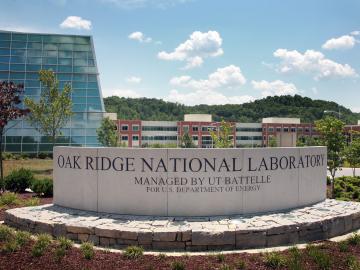
ORNL took home the top honors in three categories at the second annual DOE Geospatial Science Poster competition, held on National GIS Day. For the second year in a row, DOE awarded ORNL top prize as Best Geospatial Program. Additionally, ORNL geospatial researchers took home first place prizes for their posters in the Best Departmental Element Alignment and Best Cartography categories.
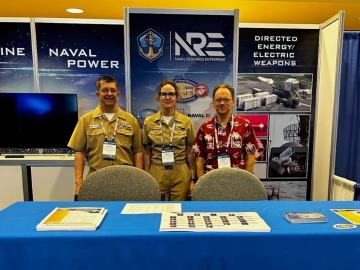
Lieutenant Commander Rich Harvey has spent the last three decades of his career serving his country. Harvey's efforts supporting the Office of Naval Research has earned him the 2023 Junior Scientist Officer of the Year award for coordination and computer modeling support for a project called TALISMAN, his leadership roles and other exemplary service markers.
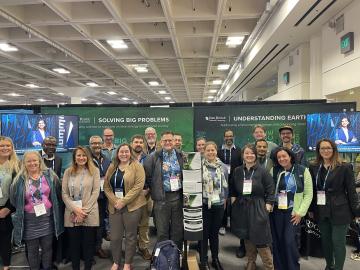
ORNL scientists and researchers attended the annual American Geophysical Union meeting and came away inspired for the year ahead in geospatial, earth and climate science.
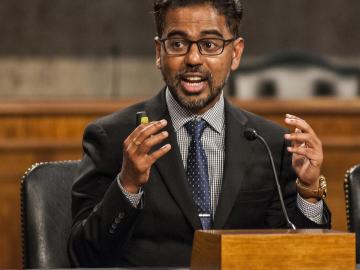
In summer 2023, ORNL's Prasanna Balaprakash was invited to speak at a roundtable discussion focused on the importance of academic artificial intelligence research and development hosted by the White House Office of Science and Technology Policy and the U.S. National Science Foundation.

Jack Orebaugh, a forensic anthropology major at the University of Tennessee, Knoxville, has a big heart for families with missing loved ones. When someone disappears in an area of dense vegetation, search and recovery efforts can be difficult, especially when a missing person’s last location is unknown. Recognizing the agony of not knowing what happened to a family or friend, Orebaugh decided to use his internship at the Department of Energy’s Oak Ridge National Laboratory to find better ways to search for lost and deceased people using cameras and drones.
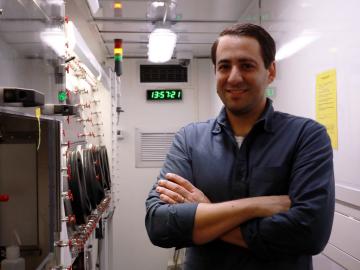
Drawing from his experience during the pandemic, Domenick Leto recognizes the need for the United States to have inexpensive, reliable capabilities to combat any type of disruption to national security, including nationwide medical emergencies. Leto and colleagues received a patent for a simple, inexpensive way to sterilize masks, plastic, and medical equipment from the COVID-19 virus.

For years, Duane Starr led workshops at ORNL to help others from across the U.S. government understand uranium processing technologies. After his retirement, Starr donated a 5-foot-tall working model, built in his garage, that demonstrates vibration harmonics, consistent with operation of a super critical gas centrifuge rotor, a valuable resource to ongoing ORNL-led workshops.


